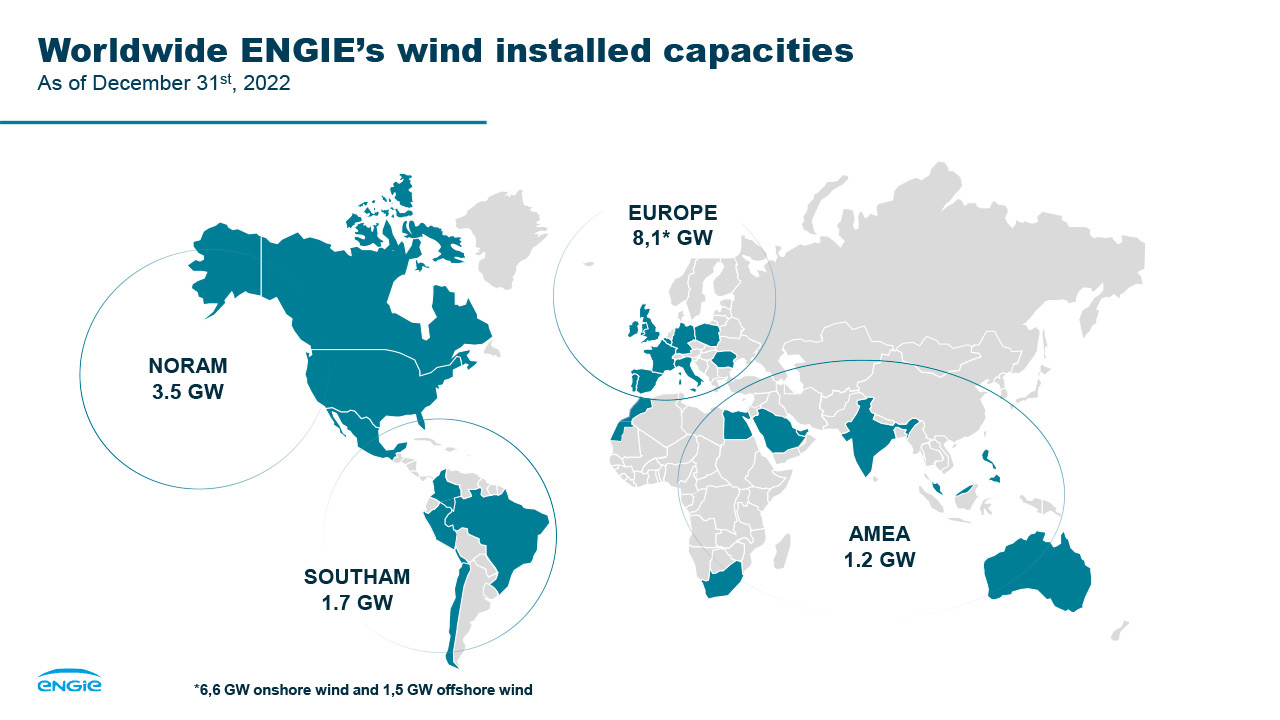Wind energy is a core component of the energy transition. Today it represents 837 GW of global installed capacity with an uplift of 12.4% over 2020, according to the Global Wind Energy Council.
Wind energy is a core component of the energy transition. Today it represents 837 GW of global installed capacity with an uplift of 12.4% over 2020, according to the Global Wind Energy Council.
ENGIE contributes to this growth with the introduction of multiple projects around the world, with the aim of reaching 80 GW of renewable energy capacities by 2030, involving multiple onshore and offshore wind projects.

Wind energy has the advantage of being unlimited, carbon-neutral and now competitive. It’s an inexhaustible resource (wind constitutes an unlimited resource), available locally, and predictable (in a precise manner over 24 or 48 hours) and relatively constant over the year (little variability from one year to the next). Lastly, in Europe, wind energy production is greater in winter, when there is a greater demand for electricity.
Wind energy does not produce greenhouse gas emissions. According to RTE (2020) emissions avoided through wind and solar energy production amount to approximately 22 million tonnes of CO2 per year.
Wind energy is a competitive energy with a limited cost for the final consumer, thanks to developments in technology and further investment in this low carbon energy.
Since 1993, there has been a rapid increase in the manufacture of wind turbines. In France in 2020, jobs in the sector have risen significantly, reporting a growth rate of 12% and a total of 22,600 direct and indirect jobs. According to Ademe, by 2050 the production costs of renewable energy should drop further through continued improvements in technology and economies of scale.